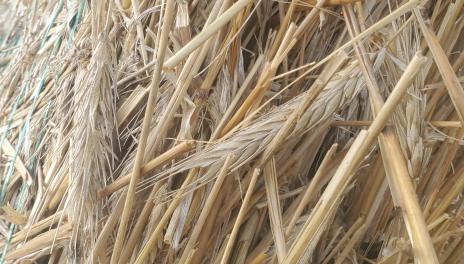The Catch in the Rye
Increased use of cover crops and the push to improve soil health have sparked interest in growing rye in North Dakota. Similar to wheat, rye is a hardy crop that can be seeded in both the fall and spring. Cereal rye is the term most used to describe rye grain; winter rye is most commonly seeded in North Dakota.
The hardiness of winter rye is evident with high potential germination and continued biomass production late into the fall, making winter rye an attractive option for grazing cattle. Winter rye is palatable as a lush fall pasture that can tolerate heavy grazing.
Winter rye also tends to be one of the first small grains to green up in the spring. If grazed prior to heading, rye makes excellent forage for the cow herd.
Rye taken for hay or chopped as silage are options for producers that don’t have fences, water, or cattle for grazing. Cutting and chopping rye early yields less tonnage of forage per acre while harvesting late increases yield at the expense of quality and palatability, as relative feed value diminishes dramatically after head emergence.
When rye is seeded on prevented plant acres, RMA coverage doesn’t allow harvesting a rye crop for seed but does permit haying. Early haying is best, but if the rye crop matures before haying begins, the hay crop is actually straw with grain, but still a good feed. A recent sample contained 8.4% crude protein and 64% TDN dry matter basis.
Some producers use winter rye to ‘dry out’ a field so it can be planted earlier. In these instances, timing is important because rye can grow too rapidly to be beneficial. The early cover crop might pull too much moisture from the soil, or dense rye growth may interfere with planting the intended crop. In a year with substantial snow fall and a wet spring, rye can produce a substantial seed crop.
Cattle producers should be wary of ergot infection in rye. The fungal infection that creates ergot growth is poisonous at certain concentrations. Ergotism causes reduced blood flow to the feet, tail and ears of cattle, and can cause abortion in pregnant cattle. Testing rye grain and hay for ergot is highly recommended. Screening at the NDSU Veterinary Diagnostic Laboratory in Fargo costs $90 and only requires a 20 gram (one ounce) sample to complete an Ergot Alkaloids by LC/MS/MS Screen. Contact your local county Extension agent or me for help interpreting your results.
Karl Hoppe, Ph. D.
Karl.Hoppe@ndsu.edu
Extension Livestock Systems Specialist
